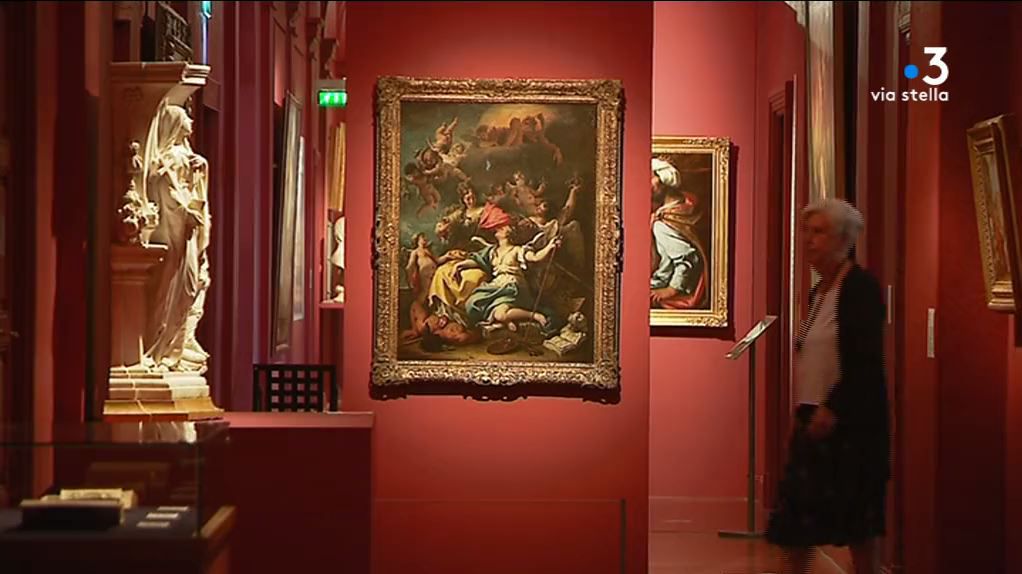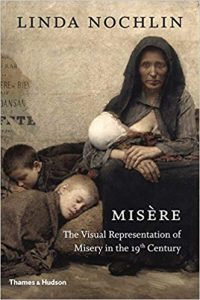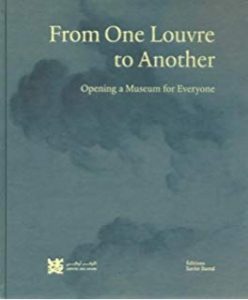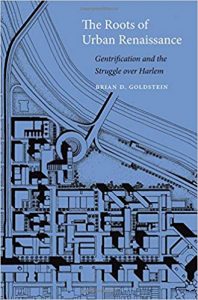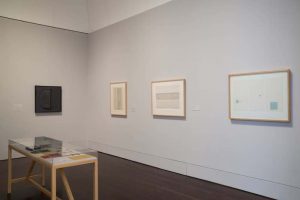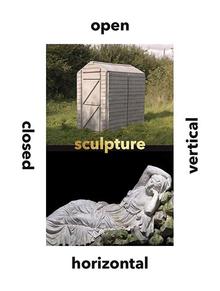CAA News Today
New in caa.reviews
posted Feb 01, 2019
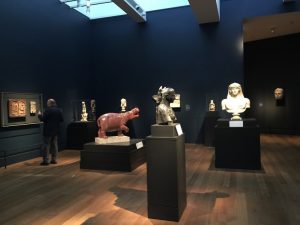
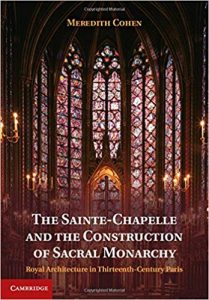 Cynthia Colburn reviews Beyond the Nile: Egypt and the Classical World by Jeffrey Spier, Timothy F. Potts, and Sara E. Cole. Read the full review at caa.reviews.
Cynthia Colburn reviews Beyond the Nile: Egypt and the Classical World by Jeffrey Spier, Timothy F. Potts, and Sara E. Cole. Read the full review at caa.reviews.
Emily Davenport Guerry writes about The Sainte-Chapelle and the Construction of Sacral Monarchy: Royal Architecture in Thirteenth-Century Paris by Meredith Cohen. Read the full review at caa.reviews.
News from the Art and Academic Worlds
posted Jan 30, 2019
Want articles like these in your inbox? Sign up: collegeart.org/newsletter
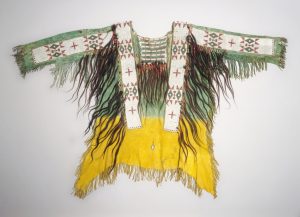
Hide Shirt, c. 1890, Native North American, Central Plains, Lakota Sioux—one of thousands of public domain artworks now available online from the Cleveland Museum of Art.
In a Landslide Decision, Employees at the New Museum Vote to Unionize
The staffers hope the union will help to address grievances such as low pay and long hours. (artnet News)
With the LA Teachers’ Strike Over, Here’s What’s Next
For the most part, the teachers won. So what happens now? (Fortune)
Unpacking Medieval African Art’s Profound Global Legacy
A new exhibition at Northwestern University centers medieval Africa’s influence. (Artsy)
WAGE Asks Artists to Demand Payment and Withhold Content from 2019 Whitney Biennial
The activist organization is asking artists invited to participate in the 2019 Whitney Biennial to withhold their work in solidarity with staffers at the museum. (Hyperallergic)
Looking to Improve Students’ Mental Health? Ask What They Need
One in three students has at least one mental-health disorder, according to a 2017 report. (Chronicle of Higher Ed)
Introducing Open Access at the Cleveland Museum of Art
The CMA has just made 30,000 public domain artworks available online. (Medium)
Meet the 2018 Professional Development Fellows
posted Jan 28, 2019
CAA has awarded two 2018 Professional Development Fellowships—one in art history and one in visual art—to graduate students in MFA and PhD programs. In addition, CAA has named one honorable mention in art history and two in visual art. The fellows and honorable mentions both receive a complimentary one-year CAA membership and registration for the 2019 Annual Conference in New York City.
The recipient of the $10,000 fellowship in art history is C.C. McKee, a dual PhD candidate in the Department of Art History at Northwestern University and the École des hautes études en sciences sociales in Paris. Accepting the $10,000 fellowship in visual art is Camila Labarca Linaweaver, a MFA candidate in Printmaking at the University of Oklahoma.
The honorable mention for art history goes to Julia Vázquez, a PhD candidate in the Department of Art History & Archaeology at Columbia University. The honorable mentions in visual art are awarded to Kira Dominguez Hultgren, who is earning a MFA/MA in Fine Arts and Visual and Critical Studies at California College of the Arts, and Rowan Renee, who is currently pursuing their MFA at the University of Michigan.
The two fellows and three honorable mentions will be formally recognized at the 107th Annual Conference during Convocation on Wednesday, February 13, 2019.
CAA’s fellowship program supports promising artists and art historians who are enrolled in MFA and PhD programs nationwide. Awards are intended to help them with various aspects of their work, whether for job-search expenses or purchasing materials for the studio. CAA believes a grant of this kind, without contingencies, can best facilitate the transition between graduate studies and professional careers. The program is open to all eligible graduate students in the visual arts and art history. Applications for the 2019 fellowship cycle will open in the late spring.
FELLOW IN ART HISTORY
 C.C. McKee
C.C. McKee
C.C. McKee is a dual doctoral candidate in the Department of Art History at Northwestern University (advised by Huey Copeland) and the École des hautes études en sciences sociales in Paris (advised by Anne Lafont). McKee received his BA from the University of California, Berkeley as a double major with honors in the history of art and highest honors in history.
McKee’s current dissertation project takes up art and visual culture from the francophone Caribbean during the long nineteenth century, arguing that, on the one hand, painting could bolster imperial authority by eliding the coeval inhumane violence and ecological brutality of colonialism. On the other, these artworks are inadvertent repositories for parallel ecologies opening onto embodied African diasporic knowledge of the Caribbean landscape.
This project represents one facet of McKee’s broader investment in the transhistorical relationship between colonialism (particularly during the seventeenth through nineteenth centuries) and its continued effects in the present. These interests include, art of the Atlantic World, contemporary African and African diasporic art, and queer aesthetic practices; all of which are indebted to black feminist, ecocritical, postcolonial, and psychoanalytic theories. McKee has developed these perspectives in various pieces of art criticism; with exhibitions at the Block Museum, Iceberg Projects (Chicago, IL), and the Ghetto Biennale (Port-au-Prince, Haiti); as well as in a forthcoming article for Art Journal. Moving forward, McKee will pursue a scholarly and curatorial practice that challenges the boundaries between the university classroom and the museum, between academic publication and exposing a broad public to the rich artistic traditions of the Caribbean.
FELLOW IN VISUAL ART
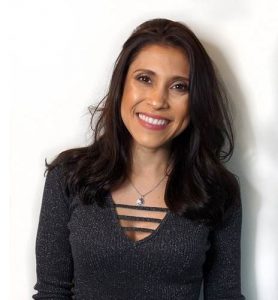 Camila Labarca Linaweaver
Camila Labarca Linaweaver
Camila Labarca Linaweaver was born in Santiago, Chile and immigrated to the United States at the age of 7. She lived and studied in Texas and holds a BFA from The University of Houston Clear Lake. She is a first-generation college graduate and is currently an MFA Printmaking candidate at The University of Oklahoma. While pursuing her graduate studies she has taught undergraduate courses in Printmaking and Drawing. Linaweavers focus within the printmaking medium is almost exclusively on singular and experimental prints. Using the landscape as a metaphor, she crafts narratives of immigrant displacement, loss, and alienation. Recently she has delved into time-based work, subjecting monotypes to various stop motion processes. Her unique approach to confronting her personal history as an immigrant results in highly nuanced imagery that aims to bridge opposing sides and create positive discourse within the context of global immigration issues.
As an emerging artist, Linaweaver has exhibited extensively throughout the US and has chosen to pursue a career in academia. In the future she aspires to participate in residencies and exhibitions that focus on community engagement and the intersection of landscape, identity, and culture.
HONORABLE MENTION IN ART HISTORY
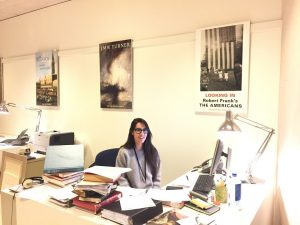 Julia Vázquez
Julia Vázquez
Julia Vázquez is a PhD candidate in the Department of Art History & Archaeology at Columbia University, where she is currently completing a dissertation titled “The Artist as Curator: Diego Velázquez, 1623-1660.” Her dissertation reconsiders the curatorial career of Diego Velázquez at the court of King Philip IV of Spain. It examines the major redecoration projects that Velázquez executed for galleries in the Spanish royal palace, considering the ways that his ambitions and interests as a painter found a new expression in this medium. It also analyzes significant paintings that Velázquez made in response to the royal art collection, considering the impact on his painting practice not only of its contents, but also of its display. Her research therefore proposes the career of Diego Velázquez at the Hapsburg court as a major episode in the history of the artist-curator, ultimately arguing that Velázquez’s simultaneous creative identities as painter to the king and curator of his art collection were mutually transformative.
Previously, Julia has held internships and fellowships at the Musée du Louvre, the Whitney Museum of American Art, the Meadows Museum, the Museo Nacional del Prado, and the National Gallery of Art. While at the Meadows, she curated two exhibitions: “Picasso’s Dream and Lie of Franco: The Spanish Civil War in Print” (summer 2017) and “Murillo at the Meadows: A 400th-Anniversary Celebration” (2017-2018). She is currently the Hilla Rebay International Fellow at the Solomon R. Guggenheim Museum, the Museo Guggenheim Bilbao, and the Collezione Peggy Guggenheim.
HONORABLE MENTIONS IN VISUAL ART
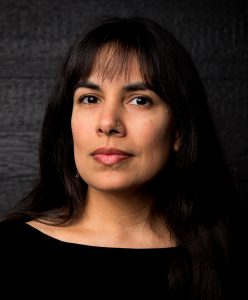 Kira Dominguez Hultgren
Kira Dominguez Hultgren
Kira Dominguez Hultgren (b. 1980) is a California-, Utah-, and Minnesota-based textile artist. She studied French postcolonial theory and literature at Princeton University (BA Comparative Literature, 2003), and performance and fine arts in Río Negro, Argentina from 2010-2012. While in Patagonia, she apprenticed with master weaver Mary Coronado, where Dominguez Hultgren studied the process and history of indigenous warp-faced weaving of Mallín Ahogado on a Mapuche vertical post loom.
Today, Dominguez Hultgren combines her interests in postcolonial theory and weaving in both her art and writing-research practice. In her third year at California College of the Arts, Dominguez Hultgren is earning a dual-degree MFA/MA in Fine Arts and Visual and Critical Studies. Her research interests include material and embodied rhetorics, loom technologies, decolonizing material culture, and analyzing textiles as a performative critique against the visual. She has won numerous awards including California College of the Art’s All College Honors Graduate Fine Art Award, the Edwin Anthony and Adalaine Boudreaux Cadogan Scholarship, and the Lenore Tawney Fiber and Material Studies Scholarship. Dominguez Hultgren is represented by Eleanor Harwood Gallery in San Francisco, where she had her first solo show, Wingspan, in 2018.
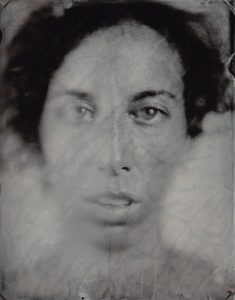 Rowan Renee
Rowan Renee
Rowan Renee is a genderqueer artist who uses photography to interrogate how sexual bodies are gendered, victimized, policed and punished. Through photographic, printmaking and sculptural techniques, they produce and appropriate images that intervene on issues of authorship, the representation of queer and feminine bodies within the art-historical canon, and the intersection of homophobia and misogyny in sex law and copyright law. The disjunctures of pleasure and abjection, felt through jouissance, informs their manipulation of images. Through artistic labor, they see a means to construct transformative meaning from experiences of violence, persecution and erasure that threaten queer and feminine subjects.
Currently pursuing their MFA at the University of Michigan, Renee works between Ann Arbor, Michigan and Brooklyn, NY. Their career began in 2006, when they joined The Miss Rockaway Armada, a collaborative flotilla of thirty people who floated down the Mississippi river on junk rafts built from NYC construction waste. Recently, they have received awards from the Aaron Siskind Foundation, the Rema Hort Mann Foundation and the Anchorage Museum of Art, as well as fellowships from the Jerome Foundation and the McColl Center for Visual Art. In 2018 they were named an Elsie Choy Lee Scholar by the University of Michigan. Their solo exhibitions include Z at Pioneer Works (2015), Bodies of Wood at The Aperture Foundation (2017), and No Honor No Heart at the Center for Visual Arts Toledo (2019). Their work has been profiled on NPR, in The New York Times, VICE, Hyperallergic, Huffington Post, American Photo Magazine and Guernica, among many other publications.
Emil Robinson and Squeak Carnwath
posted Jan 28, 2019
The weekly CAA Conversations Podcast continues the vibrant discussions initiated at our Annual Conference. Listen in each week as educators explore arts and pedagogy, tackling everything from the day-to-day grind to the big, universal questions of the field.
CAA podcasts are now on iTunes. Click here to subscribe.
This week, Emil Robinson and Squeak Carnwath discuss trust and voice in the studio, and how they approach teaching painting.
Emil Robinson is Assistant Professor in the School of Design at the University of Cincinnati.
Squeak Carnwath is an artist who maintains a studio in Oakland, California, and is a Professor Emerita from UC Berkeley.
New in caa.reviews
posted Jan 25, 2019
Catherine Puglisi discusses Rencontres à Venise: Étrangers et Vénitiens dans l’art du XVIIe siècle, edited by Linda Borean and Stefania Mason Rinaldi. Read the full review at caa.reviews.
Meet the 2019 Student Scholarship Winners
posted Jan 25, 2019
with support from

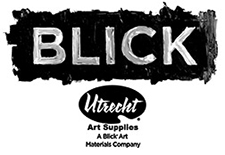
For the third year in a row, CAA is proud to partner with our sponsors, multinational publisher, Routledge, Taylor & Francis, and art materials specialist, Blick Art Materials, on student scholarships to assist CAA student members with conference costs.
Routledge, Taylor & Francis Student Scholarship
CAA Annual Conference Premier Sponsor, Routledge, Taylor & Francis supports four CAA student members with a $250 scholarship. The 2019 winners are:

Jonathan Anderson
Jonathan Anderson is an artist and art critic, and is currently working on a PhD at King’s College London. His research focuses on modern and contemporary art, with a particular emphasis on its relations to religion and theology. He is the coauthor of the book Modern Art and the Life of a Culture: The Religious Impulses of Modernism (2016), and he has contributed to various books and journals, including essays on John Cage, Francis Alÿs, Kris Martin, Rachel Whiteread, and others.
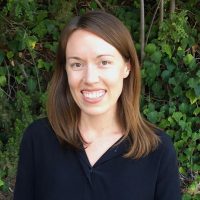
Noni Brynjolson
Noni Brynjolson is a PhD Candidate in Art History, Theory & Criticism at the University of California, San Diego. Her research analyzes socially engaged art projects in US cities. She is interested in looking at how artists address the politics of housing and gentrification through their work, as well as the informal communities that emerge within these projects. Noni is a member of the editorial collective of FIELD: A Journal of Socially Engaged Art Criticism, and her writing has been published in FIELD as well as in Hyperallergic, Akimbo, Geist and Craft Journal. She has also published chapters in two edited books: “From Mentorship to Collaboration: Art, Feminism and Community in Winnipeg” (in Desire Change: Contemporary Feminist Art in Canada, McGill Queen’s University Press, 2017), and “The Making of Many Hands: Artisanal Production and Neighbourhood Redevelopment in Contemporary Socially Engaged Art” (in Craft on Demand: The New Politics of the Handmade, I.B. Tauris, forthcoming 2019). Noni’s dissertation research was supported by a SSHRC doctoral fellowship, and she is currently a graduate fellow at UC San Diego’s International Institute as part of the 2018-19 Sawyer Seminar focused on the theme of ‘Reclaiming the City.’
Anton Lee
Anton Lee teaches in the Department of Art History, Visual Art and Theory at the University of British Columbia, Vancouver BC, where he completed his doctorate in November 2018. A specialist in the history and theory of photography, his work focuses on the contested understandings of the medium’s identities in European and Anglo-American countries from the early 20th century to the present. His current research prioritizes transforming his doctoral dissertation into a book, provisionally titled Nouvelle Photographie Amériaine: The Rise of Photographic Sequence in the United States and France, 1968–1989. Lee was the Kenneth J. Botto Research Fellow at the Center for Creative Photography in Tucson in 2016 and a Visiting Researcher at the Université Paris-Sorbonne in 2015.

Candace Smith
Candace Smith currently studies Art History at the University of North Texas where she is working towards an MA under Dr. Nada Shabout in the field of Modern and Contemporary Art of the Middle East. Her current research explores issues of power, identity politics, and built space in the context of postwar Lebanese Art institutions and reconstruction (1990-present). Smith has presented and lectured on politics, power, and space, both as a university level and at the Texas Sculpture Symposium with NY-based artist Wafaa Bilal. She has also spent time abroad meeting and working directly with some of Beirut’s most prominent art collectors and foundations as well as emerging Beirut-based artists such as Hiba Kalache. Smith received a BA from Texas Tech University after completing undergraduate thesis work on 21st-Century street art created during times of conflict in central Cairo and the West Bank. Working directly with published photojournalists and prominent, local artists, Smith addressed local agency and perceptions of space in direct contrast with American and European activity in the area. Smith was the director of social media for AMCA and collaborated with Selections Magazine on their Winter 2018 Art Pages.
Blick Art Materials Student Scholarship
CAA Annual Conference Supporter Sponsor, Blick Art Materials supports four CAA student members with a $250 scholarship. The 2019 winners are:

Margot Bernstein
Margot Bernstein is an advanced PhD candidate at Columbia University with a specialization in eighteenth-century art and material culture. Her dissertation, “Carmontelle’s Profile Pictures and the Things that Made Them Modern,” examines hundreds of portraits on paper by Louis Carrogis called Carmontelle (1717-1806), a French amateur draftsman. Margot holds a BA (2010) in art history and history from Williams College and an MA (2012) in the History of Art from the Courtauld Institute of Art. She also holds an MA (2014) and an MPhil (2015) in art history from Columbia University. In recent years, she has worked at the Metropolitan Museum of Art, the Frick Collection, the Morgan Library & Museum, the New-York Historical Society, the Calder Foundation, and the Williams College Museum of Art. Currently, Margot is a Chester Dale Fellow in the Department of Drawings and Prints at the Metropolitan Museum of Art.

Jessica Crocker
Jessica Rae Crocker lives and works in Prescott, AZ. She is currently pursuing her PhD in Philosophy, Aesthetics, and Art Theory through IDSVA (Institute for Doctoral Studies in the Visual Arts). She is a ceramic artist focusing on the role of craft as a means to develop intimacy. Her recent work explores relationships and limerence through the use of imbedded interactive technologies. She works in both figurative and functional paradigms embracing the historical symbolism of the clay material in its many forms. This generous gift is allowing her to attend the CAA conference for the first time.

Kimberly Minor
Kimberly Minor is a doctoral candidate in Art History at the University of Oklahoma. Her research broadly focuses on American art, with interests in material culture, art of the early American West, and Northern Plains Indian drawings. Her dissertation “Pictographic Motifs: Memory and Masculinity on the Upper Missouri” engages the visual, material, and experiential sources of military imagery produced by the Mandan and Hidatsa during the early nineteenth-century. She studies how indigenous male identity was negotiated through constant confrontation (both physical and spiritual) with war and warriors, adding to a growing body of scholarship that emphasizes and affirms the importance of indigenous histories. Her research has been supported by the Smithsonian Institute of Museum Anthropology and the ACLS/Luce Dissertation Fellowship in American Art.

Laura Stowell
Laura Stowell is a third-year PhD Student in Art History at the University of Washington, Seattle. She received her MA in Contemporary Art from Sotheby’s Institute of Art, New York. Her research explores intersections of performance, affect, aesthetics, and trauma in art from 1945 to the present, with specific emphasis on feminist approaches to the body. In 2018 she presented a paper titled “Listening to the Body in Pain: Regina José Galindo’s (279) Golpes” at UC San Diego’s Graduate Visual Arts Symposium, and a paper titled “Pathography and the work of Alina Szapocznikow” at the Legacies of the Enlightenment Workshop at Michigan State University. She worked as the Curatorial Assistant at the Henry Art Gallery, Seattle, and plans on continuing to work in the curatorial field.
Criteria for the Scholarship
Awardees were chosen at random and fulfilled the following criteria:
- Individuals were registered for the Annual Conference by the Early Registration deadline
- Individuals are current CAA members with proof of student status
- Individuals did not receive conference registration or travel reimbursement from their institution or employer
We look forward to seeing you in New York City next month! The 107th Annual Conference is February 13-16, 2019. Click here to explore the conference program.
Submit Your Work to ARTexchange at CAA 2019
posted Jan 23, 2019
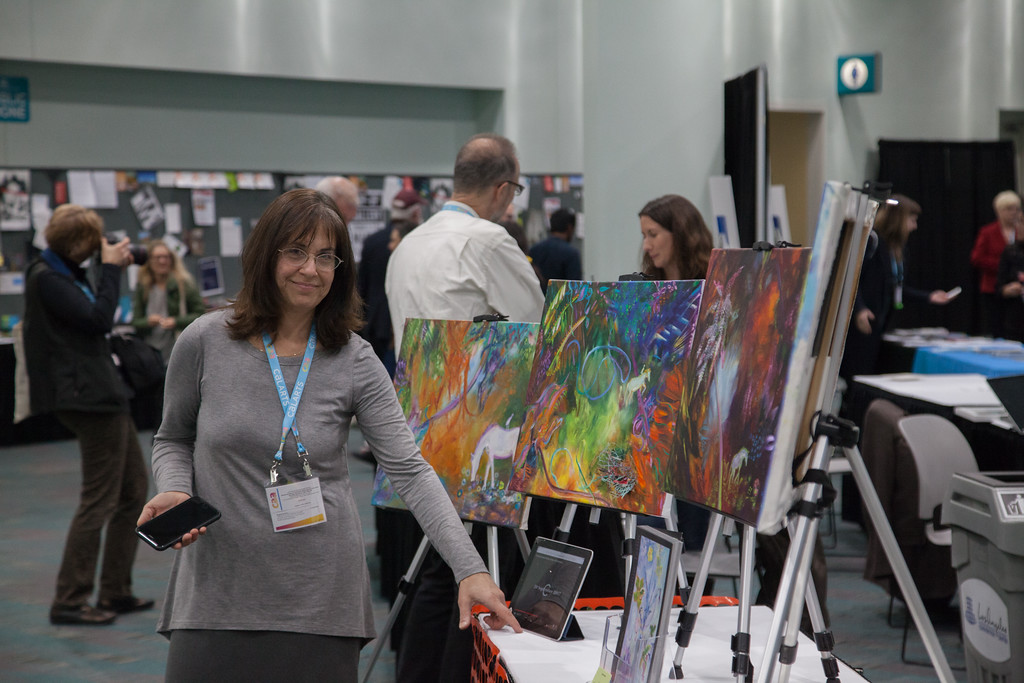
Artist Joanne Tarlin presents her work at ARTexchange at the 2018 CAA Annual Conference in Los Angeles. Photo: Rafael Cardenas
The Services to Artists Committee invites artist members to submit work to ARTexchange, CAA’s pop-up exhibition and annual social event for artists and curators. This event provides an opportunity for artists to share their work and build affinities with other artists, historians, curators, and cultural producers. ARTexchange will take place Friday evening, February 15, 2019, from 5:30–7:30 PM, and is free and open to the public.
Participating CAA members will be given space to share their work on, above and beneath a six-foot table. Artwork cannot be hung on walls, and it is not possible to run power cords devices. Participants are responsible for their own work. Sales of work are not permitted. Performance, process-based, interactive, and participatory works are especially encouraged.
Please be sure to provide all of the following information in order to complete your submission:
- A short biography or artist statement. (150 words max)
- A description of what you will exhibit and how you will use the space. Please include any details regarding performance, sound, spoken word, or technology-based work, laptop/tablet digital or media presentations. (250 words max)
- Your CAA member number (memberships must be valid).
- A link to a website of your work or 5-10 images of your recent work, including: title, year, medium and dimensions. (Maximum image size 5 mb of 1500pixels largest size and sent as JPG)
Submissions to ARTexchange can be and sent by email to Julie Hughes (artexchangeCAA@gmail.com) with “ARTexchange” and your last name in the subject line.
Deadline to submit: February 1, 2019
News from the Art and Academic Worlds
posted Jan 23, 2019
Want articles like these in your inbox? Sign up: collegeart.org/newsletter

Artist Zilia Sánchez pictured with her work Lunar blanco (1964). Soy Isla, Sánchez’s first museum retrospective in the US, will be on view at The Phillips Collection from February 16 – May 19, 2019. See more via Remezcla.
‘We’re All in Freefall’: Museum Workers Scramble for Cash Amid the Longest US Government Shutdown in History
As the shutdown enters its fourth week, all federal museums, including the National Gallery of Art and 19 Smithsonian museums, remain closed. (artnet News)
$4 Million Grant Will Promote Board Diversity at Museums
The Ford, Andrew W. Mellon, and Alice L. Walton foundations are hoping to change the statistic that 46% of American museums have all-white boards of directors. (Chronicle of Philanthropy)
Students in Rural America Ask, ‘What Is a University Without a History Major?’
Critics warn that administrators are risking the essence of a four-year college experience. (New York Times)
The Most Exciting Latino Art & Culture Exhibitions Happening in the First Half of 2019
Explore highly-anticipated art exhibitions that will honor the work of Latinx and Latin American artists. (Remezcla)
Why the New Museum’s Union Reckoning Reflects a Much Bigger Problem
Staffers at the New Museum have taken steps to unionize—and management has taken steps to impede them. (artnet News)
How to Teach a Good First Day of Class
“We do not teach brains on sticks. We teach human beings who are inspired by wonder, driven toward community, beset by fears and anxieties, and influenced in countless other ways by aspects of their lives beyond the purely cognitive.” (Chronicle of Higher Ed)
Rachel Clarke and Peter Williams
posted Jan 21, 2019
The weekly CAA Conversations Podcast continues the vibrant discussions initiated at our Annual Conference. Listen in each week as educators explore arts and pedagogy, tackling everything from the day-to-day grind to the big, universal questions of the field.
CAA podcasts are now on iTunes. Click here to subscribe.
This week, Rachel Clarke and Peter Williams discuss interdisciplinary and community-involved curriculum.
Rachel Clarke is professor of New Media Art at California State University, Sacramento. Her work intertwines themes of nature, culture, and technology; combining physical and virtual modes of making.
Peter Williams is a new media artist specializing in interactive installation, and an assistant professor at California State University, Sacramento.
New in caa.reviews
posted Jan 18, 2019
Marnin Young reviews Misère: The Visual Representation of Misery in the 19th Century by Linda Nochlin. Read the full review at caa.reviews.
Joseph Hammond writes about Louvre Abu Dhabi by Jean-François Charnier, and From One Louvre to Another: Opening a Museum for Everyone by Jean-Luc Martinez and Juliette Trey. Read the full review at caa.reviews.
Marta Gutman explores The Roots of Urban Renaissance: Gentrification and the Struggle over Harlem by Brian D. Goldstein, and An Architecture of Education: African American Women Design the New South by Angel David Nieves. Read the full review at caa.reviews.
Nikki Moore looks at From the Page to the Street: Latin American Conceptualism at the Blanton Museum of Art. Read the full review at caa.reviews.
Marin R. Sullivan writes about Sculpture Vertical, Horizontal, Closed, Open by Penelope Curtis. Read the full review at caa.reviews.



